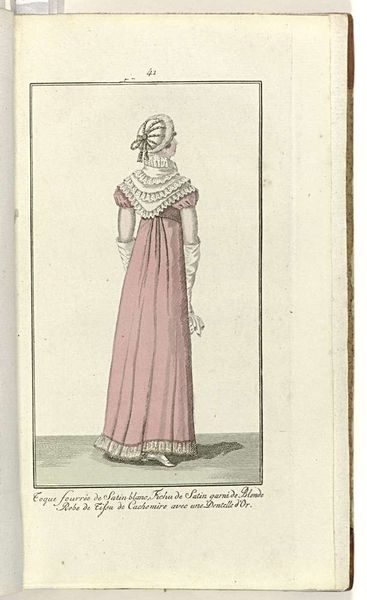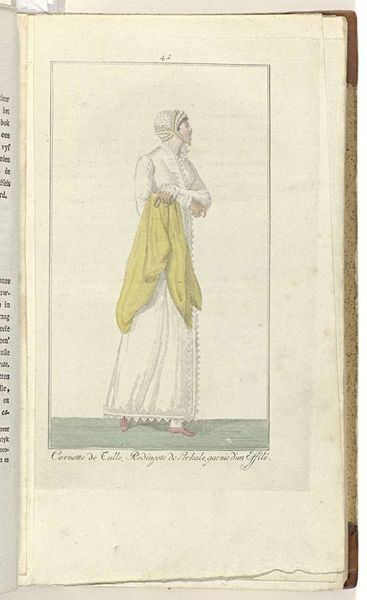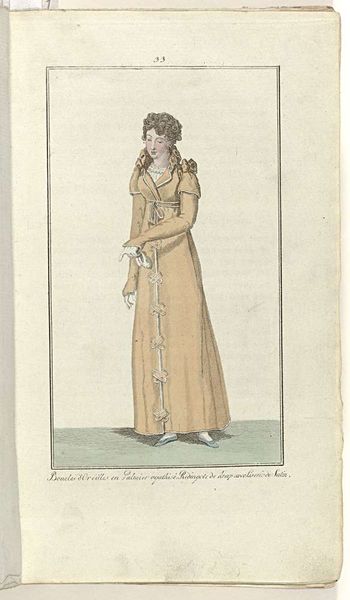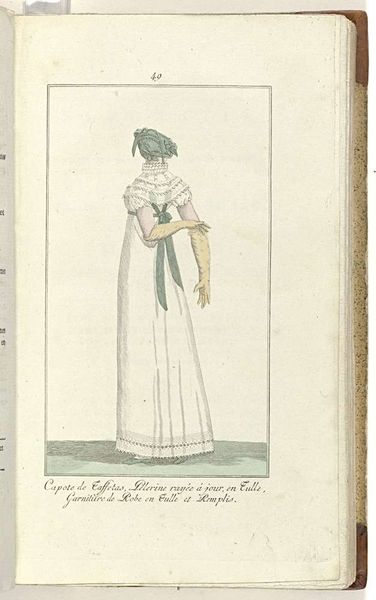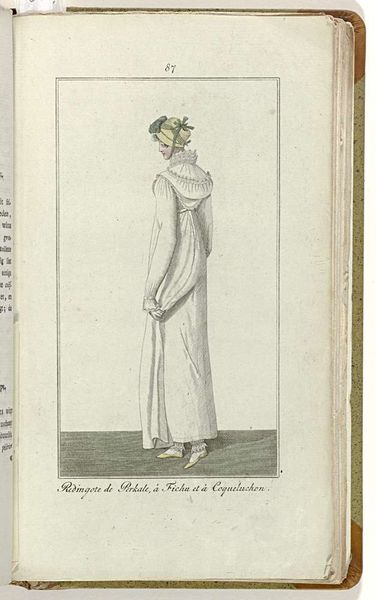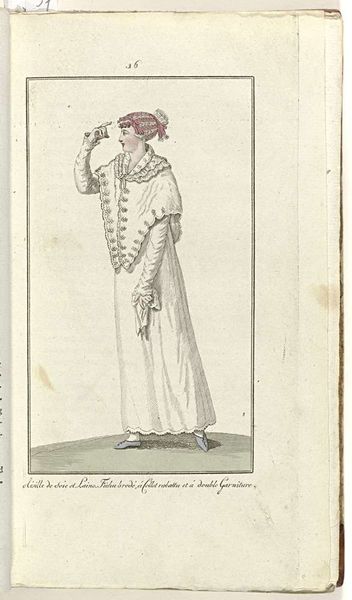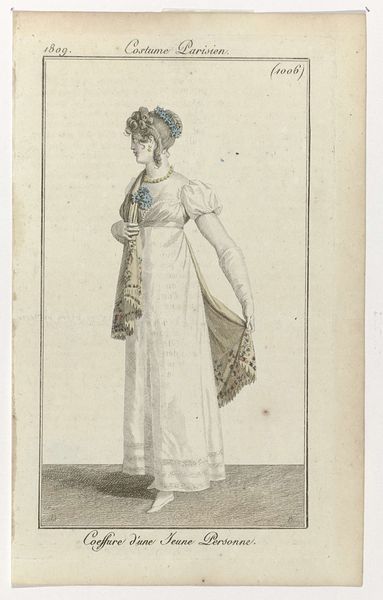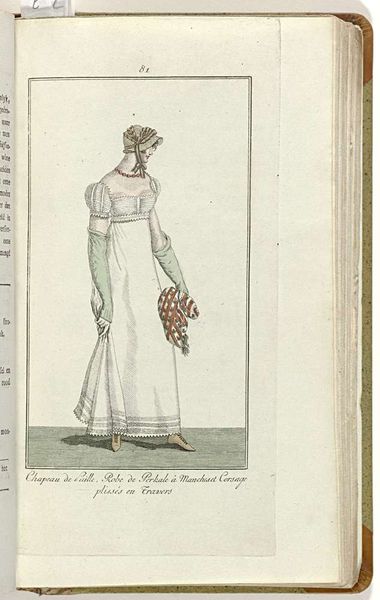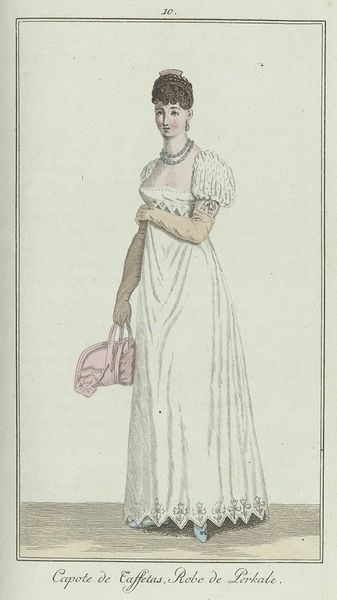
Elegantia, of tijdschrift van mode, luxe en smaak voor dames, Juni 1808, No. 48: Chapeau de Paille cousue... 1808
0:00
0:00
anonymous
Rijksmuseum
drawing, paper, watercolor
#
portrait
#
drawing
#
paper
#
watercolor
#
historical fashion
#
romanticism
#
watercolour illustration
#
genre-painting
#
dress
Dimensions: height 218 mm, width 120 mm
Copyright: Rijks Museum: Open Domain
This fashion plate, published in June 1808, shows a woman wearing the latest styles, rendered with delicate lines and watercolor washes. The description notes several materials: a straw hat, a ‘pelerine’ of unknown make, and a dress of percale – a lightweight cotton fabric, named after the French word for India, where it was originally imported. Percale became extremely popular during the 19th century, its relative affordability tied to the rise of industrial cotton production. This fashion plate is evidence of that shift, making global trade and mechanical production visible. Consider the labor involved in growing, processing, and weaving the cotton, as well as the garment’s assembly. The straw hat, too, is a reminder of agricultural work and artisanal skill, far removed from the wealthy consumer who might purchase this magazine. Paying attention to materials and making practices helps us to understand the cultural and economic forces that shape even seemingly simple images like this one, bridging the gap between fashion, art, and social history.
Comments
No comments
Be the first to comment and join the conversation on the ultimate creative platform.

